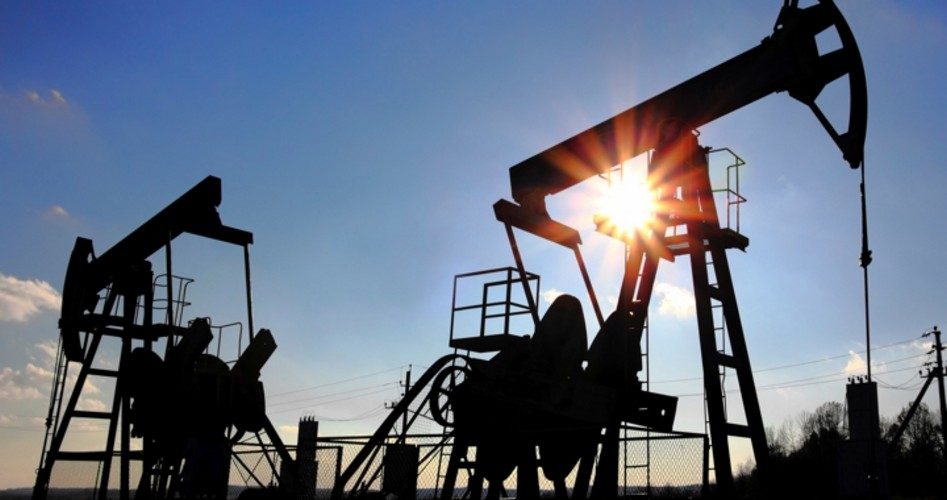
An announcement on Friday by Baker Hughes, one of the world’s largest oil-field services companies, put one more nail in OPEC’s coffin. Despite the cartel’s attempt to manipulate world crude-oil prices to its benefit, the oil and gas rig count in the United States jumped by 15 last week and now sits at 824, an increase of 374 in just the last year.
Two days earlier, another nail had been pounded into place: The announcement that the number of drilled-but-uncompleted wells (DUCs) stands at 5,443, which, according to global energy consultancy Wood Mackenzie, translates into 300,000 barrels per day (bpd) of crude just waiting to come online and add to OPEC’s woes.
OPEC is in disarray, with little chance of ever recovering its former influence over global oil prices. First came the cartel’s Plan A: flood the world market with oil in hopes that would drop oil prices so low that it would bankrupt so many American oil producers that production would drop. A sufficient decline in supply would drive prices up, allowing the cartel’s members to staunch its bleeding, if not stop it altogether. When prices were at $100 a barrel, those members were financially free to engage in military adventures and build up their welfare states. It hoped to return to those heady days of yesteryear.
OPEC’s strategy almost worked. Prices dropped from about $95 a barrel in 2014 to $27 a barrel in February, 2016, bankrupting 119 North American oil and gas producers and taking nearly 900,000 bpd off the market.
After the emasculation of the U.S. energy industry, the cartel, in November 2016, moved to Plan B: a production cut to take 1.8 million bpd off the market in a bid to drive oil prices (which had rebounded from $27 to the high $40s) even higher, to as high as the mid-$60s.
The reality of Plan B was that prices did move higher, to about $57, before falling back once again to the high $40s. And U.S. frackers came roaring back. According to the French bank Société Générale, global production of crude oil this year will wind up 400,000 bpd higher than last year’s average, much of it coming from America’s oil fields.
There are three primary reasons for the U.S. comeback: ever-lower breakeven points on those rigs (making them profitable even if prices dropped below $30); hedging in the futures market (locking in high prices even if prices do decline); and U.S. investors seeing an opportunity and taking advantage of it. For example, five firms operating in Texas’ Permian Basin have raised nearly $7 billion in the last year through the issuance of new stock. Those five — Pioneer, Parsley, Diamondback, RSP Permian, and Concho — are investing that money, expecting to raise oil-production rates in that single oil field by nearly 20 percent compared to last year.
There was a time not so long ago when OPEC, and Saudi Arabia primarily, was able to call the shots. On October 6, 1973, Syria and Egypt, with the support of other Arab nations, launched a surprise attack on Israel on Yom Kippur, Judaism’s holiest day. On October 12, then-U.S. President Richard Nixon authorized “Operation Nickel Grass,” an airlift of weapons and other military supplies to Israel.
Eight days later, OPEC blocked all oil deliveries to the United States, declared it a “principal hostile country.”
By the time the embargo ended in March 1974, the world price of oil had skyrocketed from $3 a barrel to nearly $12. This led to long lines at gas stations for drivers trying to fill up their tanks, and ultimately to an economic recession.
That was the first oil shock. The second occurred five years later, in 1979, during which the world price of oil jumped from $20 a barrel to nearly $40, again resulting in long lines and triggering another economic recession.
Today the roles are reversed: America’s oil patch is recovering, with the Energy Information Administration projecting that U.S. crude-oil production will increase by 630,000 bpd this year, touching 9.4 million bpd, and approaching 10 million bpd by the end of 2018.
On the other hand, Saudi Arabia has its hands full trying to keep its cartel members in line while struggling to pay its own bills, and the Kingdom is seeing its prospects of selling part of its precious oil company, Aramco, for enough money to diversify its economy away from energy diminish by the day.
In addition, those American families who lost loved ones in the 9/11 attacks are gearing up to sue the Kingdom for its role in those attacks.
As Rakesh Upadhyay wrote at Oilprice.com, “Saudi Arabia, which was the leader of OPEC and the price setter of the world, is losing its clout”, adding, “OPEC is finding itself in a Catch-22 situation: it is losing market share to the U.S. shale oil drillers, but it is unable to propel market prices higher. It is losing its ability to influence prices.”
Once the cartel loses that ability, it loses the very reason for its existence.
An Ivy League graduate and former investment advisor, Bob is a regular contributor to The New American magazine and blogs frequently at LightFromTheRight.com, primarily on economics and politics. He can be reached at [email protected].
Related articles:
Keystone XL Pipeline Granted Approval by State Department
Fitch Knocks Saudi Arabia’s Credit Rating Down Another Notch
Saudi Arabia Losing Influence in Global Oil Markets
Drop in Crude Oil Prices Threatens OPEC and Its Production Cut Deal



